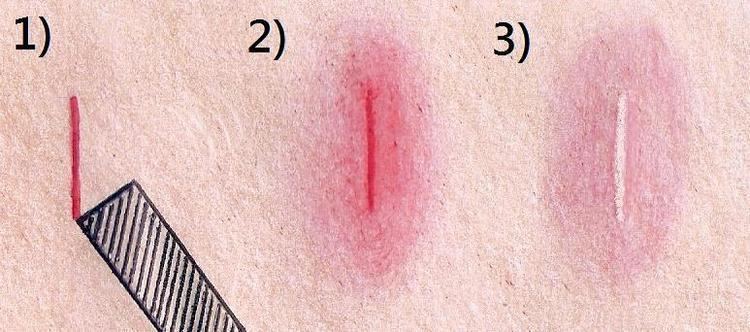 | ||
The triple response of Lewis is a cutaneous response that occurs from firm stroking of the skin, which produces an initial red line, followed by a flare around that line, and then finally a wheal.
The triple response of Lewis is due to the release of histamine.
Histamine, or 2-(imidazol-4-yl)ethanamine, is a dibasic vasoactive amine that is located in most body tissues but is highly concentrated in the lungs, skin, and gastrointestinal tract. Histamine is derived from the decarboxylation of the aminoacid histidine, a reaction catalyzed by the enzyme L-histidine decarboxylase. Histamine is a small molecule, stored in granules of mast cells and basophils.
Mast cells and basophils are the effector cells involved in the immediate hypersensitivity response. Found in tissues throughout the body, they are particularly associated with blood vessels and nerves and are in proximity to surfaces that border the external environment.
Explanation:
Injected intradermally histamine elicits the triple response consisting of:
- Red spot: due to capillary dilatation
- Flare: redness in the surrounding area due to arteriolar dilatation mediated by axon reflex.
- Wheal: due to exudation of fluid from capillaries and venules
Hunting response of Lewis
The underlying pathophysiology of frostbite is a combination of freezing, vascular insufficiency (constriction and occlusion) and damage due to inflammatory mediators. As extremities cool, the ‘hunting response of Lewis’ (alternating vasoconstriction and vasodilation) occurs, ending with vasoconstriction.
